The presence of the Sinaloa and CJNG cartels in Africa has received little attention, writes Vanda Felbab-Brown. But it is growing and at least the drug trafficking, if not the cartels themselves, are becoming intertwined with jihadi terrorism and complex local insurgencies. This piece was originally published by Mexico Today.
As the narco-blocades playing out in recent days across several Mexican states and key cities such as Tijuana, Guadalajara, and Cuidad Juárez again painfully showed, the bipolar war between the two largest Mexican criminal groups – the Sinaloa Cartel and Cartel Jalisco Nueva Generación (CJNG) – and their local allies and vassals continues unmitigated. Moreover, their bipolar competition has spread around the globe. In Latin America, as I have written in this series, the competition has pushed up violence – dramatically amplifying conflict and death rates in places such as Colombia and Ecuador and stimulating big increases in homicides in places such as Chile long thought to have effective police forces able to deter violent crime. In the Asia-Pacific region, where Chinese triads rule methamphetamine trafficking, but which features a wide panoply of criminal groups, the foreign policies of the Sinaloa Cartel and CJNG have in recent years also become more provocative, as I detailed in my second column in this series. The new Asia-Pacific policies of the two cartels now pose new public safety threats, even though law enforcement agencies in the Asia-Pacific region tend to be far more capacious than in Latin America and, unlike their Latin American counterparts, have managed to keep drug trafficking and other criminal violence at minimal levels.
The presence of the two Mexican cartels in Africa, the focus of this column, has received even less attention. But it is growing and at least the drug trafficking, if not the cartels themselves, are becoming intertwined with jihadi terrorism and complex local insurgencies.
Africa was catapulted to the radar screen of Mexican trafficking groups after Europe became a key cocaine destination in the late 1990s. Various West African countries were only a relatively short flight away from Brazil and Venezuela, the key staging grounds for the cocaine trade to Europe. Beyond the convenient Transatlantic geography, West Africa came in with other advantages for drug traffickers. Century-old smuggling routes and networks crisscrossing Africa from coast to coast and extensive territories governed by a variety of rebellious tribes and jihadi and other militant groups made drug trafficking through West Africa readily feasible. So did the weakness and corruption of many West African security and law enforcement forces that largely lack maritime and coastal interdiction capabilities, often function as essentially pretorian guards, and frequently have a stake in many illegal economies. The weakness of the West African security forces and their lack of focus on countering drug trafficking was in stark contrast to another smuggling route between Latin America and Europe – the Caribbean – that had become saturated with U.S. and European interdiction efforts. Moreover, the large flotillas of Chinese, Russian, and European vessels fishing illegally along West Africa provided convenient cover for drug reloading, as well as decimated legal livelihoods of already poor populations, rendering them all the more susceptible to participating in drug smuggling. Finally, West Africa featured some of the continent’s most potent drug trafficking networks– namely, Nigerian criminal groups with their extensive connections to Europe and South Asia.
In the early 2000s, the Sinaloa Cartel, soon to be followed by the then-potent Zetas, another large Mexican criminal group, had established presence in Nigeria, Ghana, Mali, and Senegal to move cocaine. Rapidly, a gushing coke pipeline ran from Latin America’s Southern Cone to Europe. Within ten years, at least nine of the largest Mexican and Latin American drug trafficking organizations (DTOs) came to operate in Africa.
With complex layers of government and political complicity in the drug trafficking, Guinea-Bissau emerged as the ultimate narco-state in West Africa. But, melting down under the onslaught of multiple jihadi terrorist groups and insurgencies of various Tuareg tribes, Mali soon followed as another crucial cocaine smuggling vector: Various Tuareg tribes and smuggling networks and even jihadi groups got to cut in on a piece of the coke action when the trade crossed the territories under their influence. The collapse that followed the overthrow of the Muammar el-Qaddafi regime in Libya in 2011, and the subsequent civil war in the country and rise of assorted militias and warlords, provided both weapons and logistical assets for both criminal rackets and politically-motivated violence across the Sahel.
A pioneer in developing new drug markets and trafficking routes in faraway places, the Sinaloa Cartel came to dominate the cocaine trail running through Africa. But just like in Asia, it did so through a rather hands-off approach — letting the myriad of local criminal and militant groups move the cocaine — with only a minimal presence on the ground in the Sahel. Instead of micromanaging the African part of the smuggling, the Sinaloa Cartel has mostly focused on getting the cocaine into Africa and then moving it from the Africa’s northern shores into Europe. The Zetas tried to keep, if not pace with the Sinaloa Cartel, at least a foothold in Africa. But by 2017, their overextension in Mexico and dramatic decline there also eviscerated their overseas activities. The newly-emergent and hyper-violent and expansionist Cartel Jalisco Nueva Generación followed the Sinaloa Cartel into Africa. Both are now implicated in the cocaine trafficking there, though the Sinaloa Cartel is still by far the key external actor and the critical enabler of the Transatlantic drug trade.
In North Africa, such as in Morocco, the Mexican cartels’ presence has also served to facilitate cocaine smuggling into Europe. Interestingly, many of the Moroccan cocaine smuggling networks that emerged over the past decade remain by and large separate from the much older groups that for decades had been smuggling Moroccan hashish to Europe. When several years ago I interviewed Moroccan hashish smugglers in the Riff mountains and elsewhere in Morocco, most were adamant that moving cocaine was simply too risky – attracting unwanted attention from Moroccan authorities and European law enforcement agencies. And the mixing of the cocaine trade in Morocco with jihadi terrorism further increased the risks. Far more than solely profit-maximizers willing to smuggle anything (as criminal groups often get caricatured), the Moroccan hashish smugglers were at least as much risk-minimizers. Nonetheless, the Mexican cartels, principally, Sinaloa, did manage to develop a well-functioning network of local facilitators and proxies in the region.
Even less known than the cocaine pipeline in North Africa has been the Mexican cartels’ presence in the center and south of the continent, such as in the Democratic Republic of the Congo and Mozambique.
Yet the Mexican DTOs presence there is fascinating: Once again, it was the Sinaloa Cartel that established a beachhead in central and southern Africa. But with impressive foresight, it did so not for moving cocaine, but rather to facilitate the smuggling of methamphetamine precursors from China to Mexico. The expansion of China’s trade with Africa provided a particularly convenient cover as Chinese shipping containers carrying consumer goods to Africa could hide the synthetic drug precursors.
How the Mexican DTOs have operated in Africa is also significant. Like in the Asia-Pacific region, they have predominantly stuck to a very small on-the-ground presence, much less visible and extensive than their footprint in Latin America. And indeed, much less visible and extensive, than is, for example, the presence of Chinese and Vietnamese wildlife trafficking networks in Africa. Mostly, the Mexican DTO footprint has been limited to a few individuals, with the DTOs relying on local African drug smugglers to arrange operations. One such key African collaborator of the Sinaloa Cartel has been Braima Seidi Ba, a dual-national of Guinea-Bissau and Portugal, who in July 2022 was stunningly acquitted by a Guinea-Bissau court ofdrug trafficking charges.
Facilitation meetings between the Sinaloa Cartel and the African business partners have often taken place in other countries, frequently outside of the African continent, such as in Europe.
Although the Sinaloa Cartel’s presence in Africa surpasses other Latin American DTOs in terms of logistical nodes and capacities, local allies, and corruption networks, it is still very indirect and very quiet. African and Latin American counternarcotics officials have told me that the Sinaloa Cartel on the continent has been avoiding getting into local fights. The cartel has not sought to dictate the modalities of the trafficking across the African continent either. Nor has it tried to push local proxies into exclusive relations with the Sinaloa Cartel only. And the reach of CJNG into Africa has simply been too small for that criminal group to attempt to instigate the takeover of Sinaloa’s networks like it has attempted in Colombia, Ecuador, and elsewhere in Latin America. As a Latin American counternarcotics official who had been posted to West Africa told me this spring, “Everyone talks about the presence of the Mexicans in West Africa. We all know how key they are. But we just don’t see them on the ground; they are not flashy, they stayin the shadows. It’s like this over-the-horizon ghost that organizes the whole thing [trade], but lets the locals [African smuggling networks] run with it [the drug trafficking] across the continent.”
But the weight of Mexicans’ footprint, if not their flashiness, in Africa may increase. Like the Zetas a decade ago, the Sinaloa Cartel is reportedly inserting itself into migrant smuggling, including of Africans who try to get to the United States through Mexico. Attempts by Mexican DTOs to recruit, including forcibly, these unfortunate African migrants for drug smuggling facilitation may grow. Already, at least in one instance, the Sinaloa Cartel recruited a Mexico-based Nigerian, whose partner had previously been married to a Sinaloa Cartel member.
Certainly, in Europe, the on-the-ground presence of the Mexican criminal groups is expanding. And with it, come many questions and risks, as I will discuss in the concluding piece in this series.
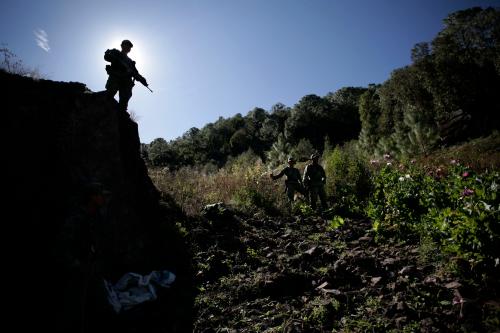

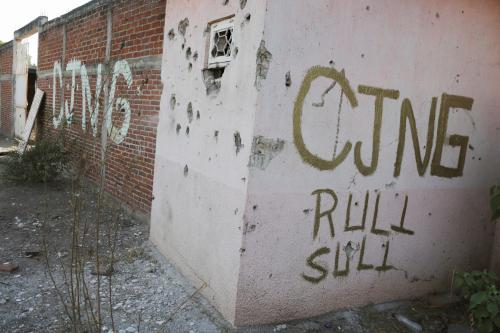

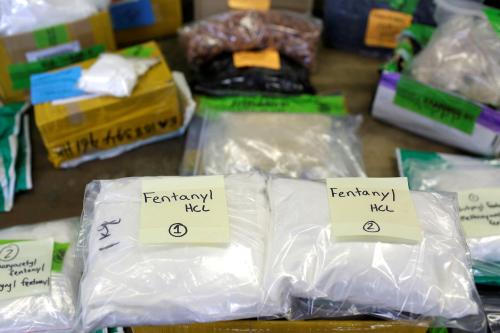
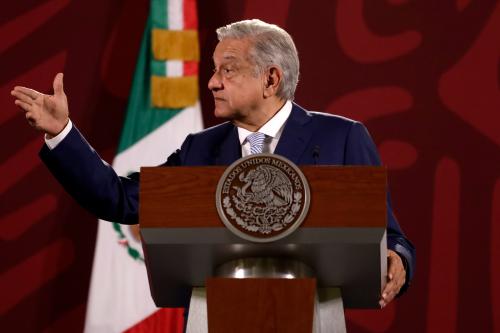
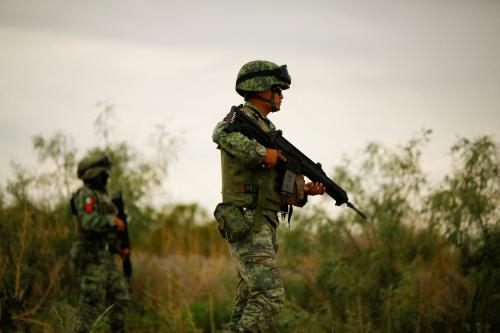
Commentary
Op-edThe foreign policies of the Sinaloa Cartel and CJNG – Part III: Africa
August 21, 2022